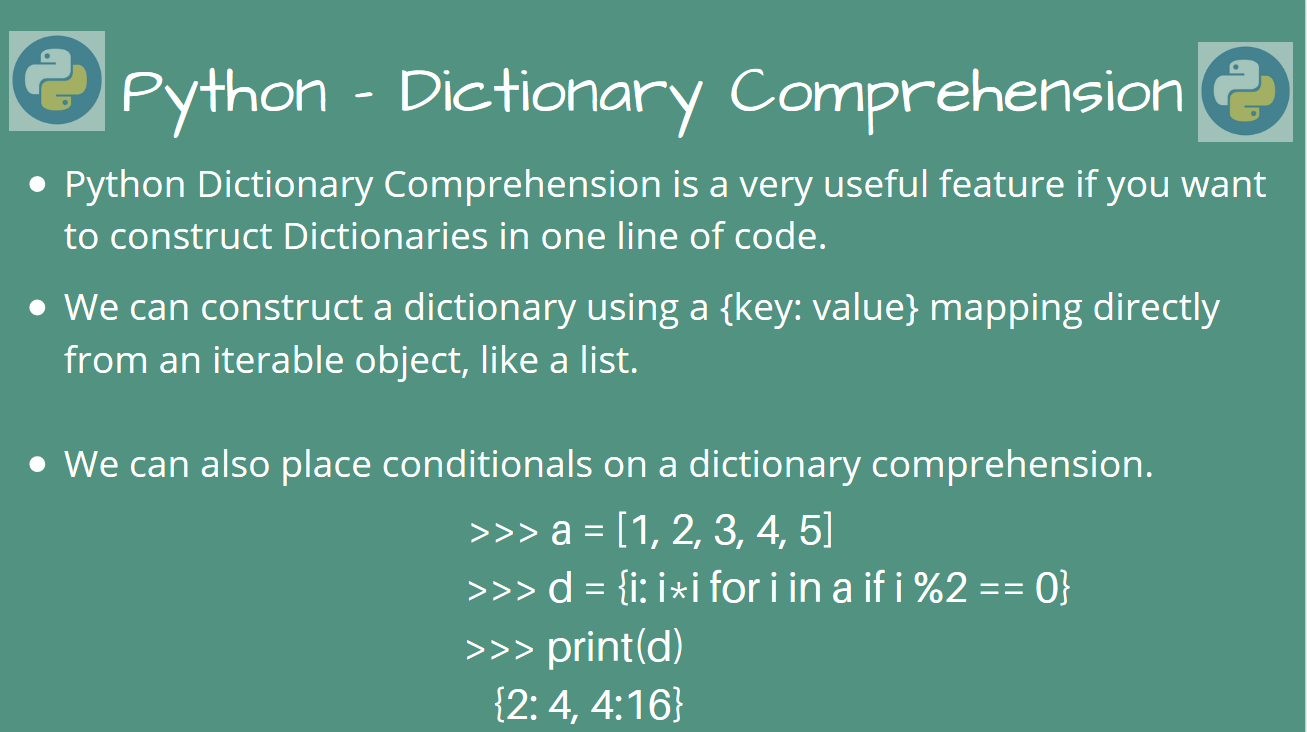

To cut through the noise and focus on the key events that matter, you can search the logs by hostname, service, source, messages, and more. We give a cost-effective, scalable method to centralized Python logging, so you can obtain total insight across your complex architecture. Monitor logs from all of your Python applications and systems into a centralized and easy-to-navigate user interface, allowing you to troubleshoot faster using Python monitoring. However, the tool does more than just keep track of your application's performance. Based on a list of values, you can create a new dictionary or convert list to dictionary python by applying the dictionary comprehension.Ītatus is an Application Performance Management (APM) solution that collects all requests to your Python applications without requiring you to change your source code. A Python zip() function can be used to create a dictionary from two lists. If you retrieve data from a dictionary, the order in which it was stored may differ from the order in which you stored it.Ĭonvert list into dictionary python, implying the omkeys() method, hence creating a dictionary from a list. Key-value pairs are stored in the dictionary, whereas various data types are stored in the list.ĭictionaries and Lists differ in how they store data.
#Create dict from list python zip
It is possible to iterate through the list using the zip function and to have the output in any order.Īmong the many data structures used to store data, lists, and dictionaries are the most commonly used.

Python dictionary is created using curly braces The Final Shotĭevelop a Python program to create dictionary from list python, with all the odd elements having keys and all the even elements having values. Dictionaries are sometimes called associative python arrays or hash tables in other programming languages. In Python, a Dictionary is a built-in data structure that stores key-value pairs. You can also create an empty list using the following syntax: my_list = Here's an example of a Python List that contains three integers: my_list = Python List is simply an ordered collection of elements, which can be of any data type, such as integers, strings, or even other lists. Python conversion from List to Dictionary.
#Create dict from list python how to
In this article, let's dive deep into Python and see how to convert a list to a dictionary python. Python is a powerful programming language with several built-in data structures, including lists and dictionaries.

Lists enable the storage of values in an ordered manner, whereas dictionaries offer a means of storing data with particular keys that match the values they comprise. They enable you to hold numerous values equivalent to a specific data structure.

Python collections encompass objects like lists and dictionaries. Python lists are converted into dictionaries here.Īs lists are ordered, and dictionaries are unordered, results can differ based on the order of inputs. In Dictionary, data is stored as key-value pairs, while in List, heterogeneous data types are stored. The list and dictionary are the data structures that captivates data.


 0 kommentar(er)
0 kommentar(er)
